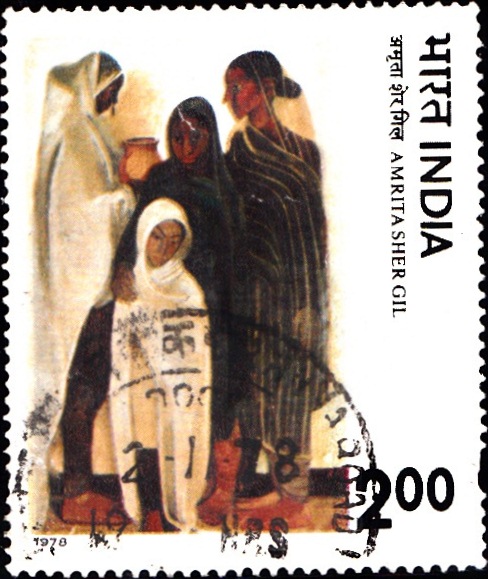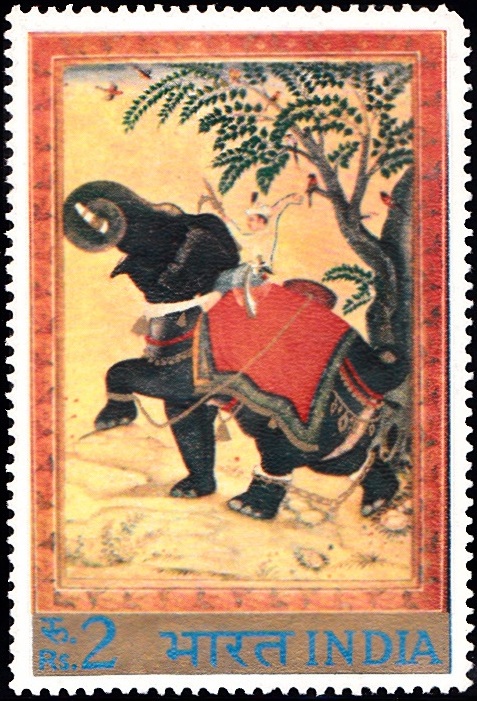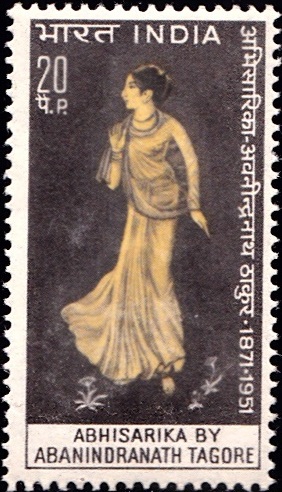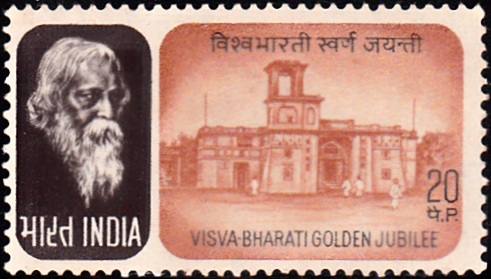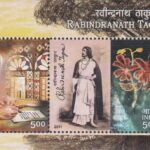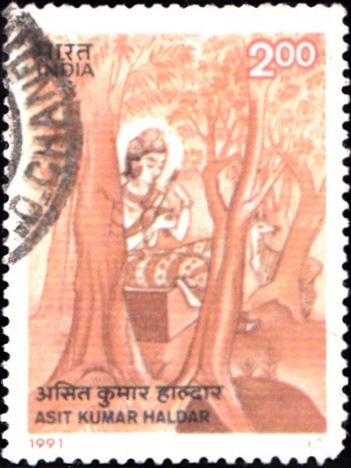
Asit Kumar Haldar
A commemorative postage stamp on the Birth Centenary of Asit Kumar Haldar (1890-1964), an Indian painter during Bengal renaissance and an assistant of Rabindranath Tagore in Shantiniketan :
 Issued by India
Issued by India
Issued on Dec 28, 1991
Description of Designs : The stamp depicts Asit Kumar Haldar’s painting “Siddhartha with an injured Bird”. The first day cover depicts the self portrait of the artist. The cancellation has been designed by Ms. Alka Sharma.
Type : Stamp, Postal Used
Colour : Multi Colour
Denomination : 200 Paise
Overall size : 3.91 x 2.90 cms.
Printing size : 3.55 x 2.54 cms.
Perforation : 13 x 13
Paper : Imported Un W/M Gravure Coated Stamp Paper
Number Printed : 6,00,000
Number per issue sheet : 35
Printing Process : Photogravure
Printed : India Security Press
Name : Asit Kumar Haldar
Born on 1890 at Jorasanko, Kolkata, India
Died on 1964 at Lucknow, Uttar Pradesh, India
About :
- Asit Kumar Haldar, a pioneer of the Renaissance School of Indian Painting and a distinguished disciple of Abanindra Nath Tagore was born in Calcutta in 1890. As a child he owed his first inspiration to his grandfather, Rakhaldas Haldar and also to his father Sukumar Haldar both of whom had an innate taste for painting. In deference to the talent shown by young Asit Kumar, he was taken off the school at the age of 14 and admitted to the Government School of Art, Calcutta. His zeal for fine art was pronounced even at this early age.
- It was indeed a happy augury for Dr. Abanindra Nath Tagore to have at the very beginning of his national art movement a talented young artist like Asit Kumar Haldar. Haldar has produced several outstanding works, such as “Seeta in Ashoka Grove”, “Apsara”, “Damayanti”, “At the Temple“, “Krishna and Yashoda” and “Awakening of Mother India” which bear a striking resemblance to the Ajanta frescoes, but all of which were done well before 1909 when he first visited Ajanta. Haldar‘s art did not therefore merely canalize or regiment the national aspiration but actually helped in the regeneration of the art life of India.
- Asit Kumar Haldar‘s creative imagery was ceaseless. His art is not an abstruse expression of inarticulate pattern, it is a value-laden narrative, speaking out at once its inner meaning to the observer. In this respect, Haldar’s art is like a seer’s or a poet’s vision, which enriches the soul, inspires the mind and ennobles the ignoble. The great poet Rabindranath Tagore often found inspiration from the themes of Haldar‘s sensitive brush drawings of lyrical scenes from village life, while composing his immortal songs.
- Haldar’s masterpieces are several and include “Raj–Raja“, “Lotus”, “Vina“, “Kunala and Ashoka“, “Dan–Lila“, “Ras–Lila”, “The Flame of Music”, “Pronam“, “The Precious Gift“, “The Captive Prince“, “The Negro Princes” etc. Haldar is abounding in his technique. He painted in oil, tempera, water colour, according to his mood and the requirement of the subject and even discovered a special technique ‘lacsit‘ – lacquered paintings on wood. Haldar was also the first Indian artist to be elected Fellow of the Royal Society of Arts, London (1934). He also received recognition from the British Government with the award of a title in 1941. His name and fame had spread far and wide and his work, “The Dance of Destruction” was published by the Czechoslovak Government in their War Souvenir ‘India and Czechoslovakia‘ in 1943. One of his works, “Yashoda and Krishna” appeared in “Great Philosophers of the East” by E.W.F. Tomlin, 1959.
- Text : Courtesy Lalit Kala Academy.



